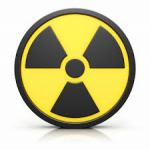Toxic Words in Copy.
If you were to do a Google search of all the copy written by professional copywriters, freelancers, content marketing peeps and business owners – and I mean all the copy, from websites to brochures, to press releases, etc. – I bet there would be about 40 benefit/feature words that would make up 10% of the entire count. Words like “innovative,” “best,” “superior service,” “new” and “% off.” These words as toxic. Overused and over promised, they tend to fall on deaf consumer ears. They inure consumers to other important copy that actually tell a story; the good words that convey a sense of identity and differentiation.
Play copy editor for a moment. Read you work, circle the words that sounds like copy — that sound like common promise – and remove them. See what you have. Toxic words when used in a story are more palatable. But in copy or selling – they shut down our brains. This is why storytelling or, as Co:Collective’s Ty Montague puts it, “story doing” is the haps these days.
Just as playing a favorite song too many times or eating too much strawberry shortcake in one sitting can burn a person out, use of toxic copy words must be carefully watched. Peace.



